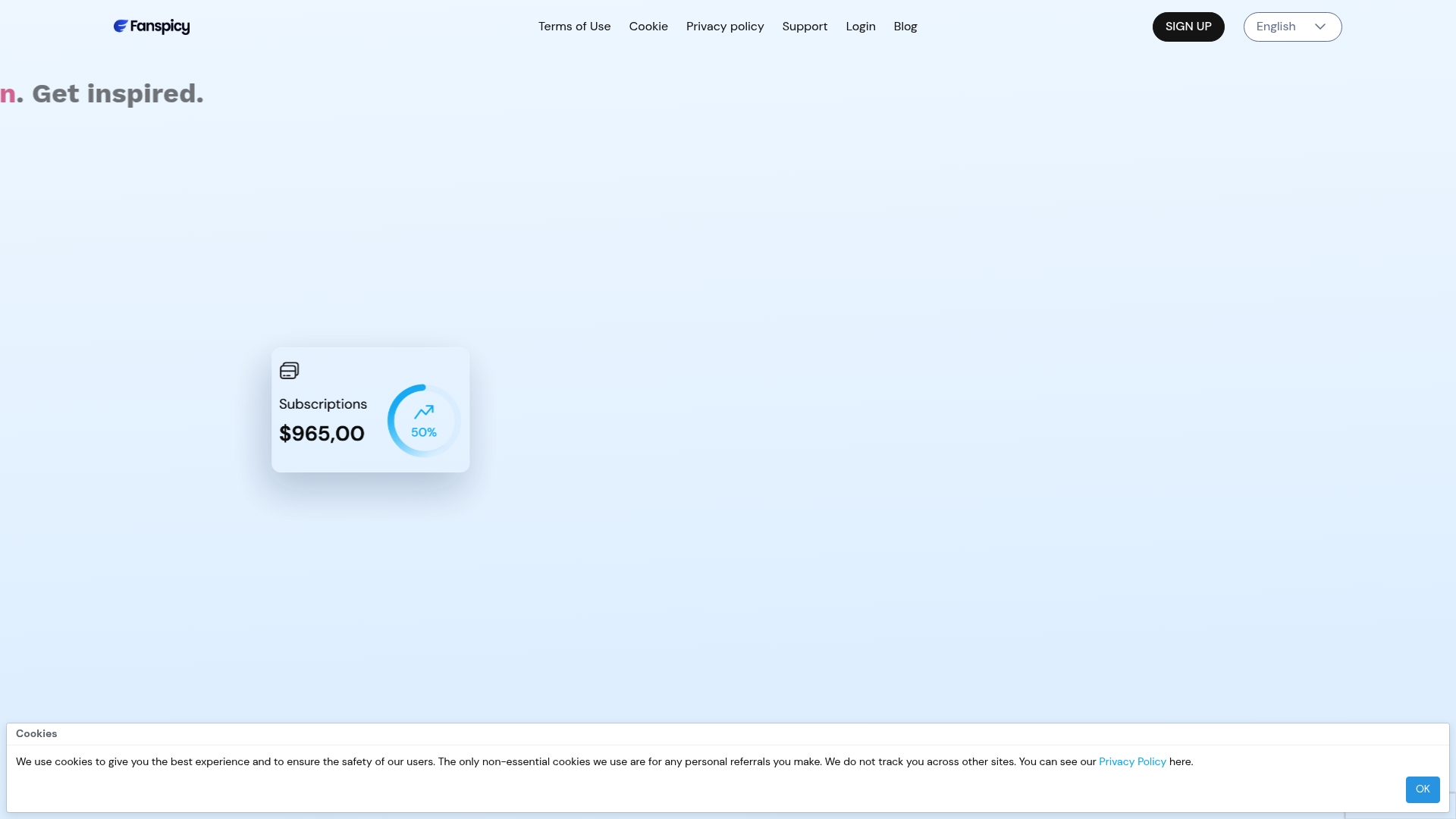Table of Contents
More than 2 million creators now earn income from content monetization platforms, signaling a dramatic shift in how digital work pays off. Finding the right platform is about more than just sharing videos or photos. The stakes are high for creators seeking control, safety, and sustainable revenue streams. This guide helps creative professionals understand the real functions, risks, and opportunities these platforms offer today.
Table of Contents
- Defining OnlyFans Alternatives And Their Core Purpose
- Major Categories Of OnlyFans Alternative Platforms
- Key Features And Monetization Methods Compared
- Creator Requirements And Compliance Essentials
- Risks, Safety, And Privacy Concerns For Users
- Choosing The Right Platform: Costs, Community, And Support
Key Takeaways
| Point | Details |
|---|---|
| Creator Empowerment | OnlyFans alternatives offer creators control over content distribution, subscription pricing, and audience relationships, transforming them into economic ecosystems. |
| Diverse Monetization Strategies | Platforms provide various revenue generation methods such as tiered subscriptions and pay-per-view options, catering to different content styles. |
| Compliance and Safety | Creators must adhere to compliance regulations regarding age verification and intellectual property to navigate the risks of content creation. |
| Strategic Platform Selection | Choosing the right platform involves evaluating commission rates, audience demographics, and support, which are crucial for sustaining growth and engagement. |
Defining OnlyFans Alternatives and Their Core Purpose
Content creator platforms like OnlyFans have transformed how digital entrepreneurs monetize personal brand and content. Content monetization platforms enable creators to generate revenue directly from their audience through subscription-based models, bypassing traditional intermediaries. According to Wikipedia, these platforms allow content creators to upload videos and earn income through monthly subscriptions, one-time tips, and pay-per-view content.
The core purpose of OnlyFans alternatives goes beyond simple content sharing. These platforms provide creators with critical tools to:
- Control their content distribution
- Set personalized subscription pricing
- Maintain direct relationships with fans
- Receive payments securely and quickly
- Protect intellectual property rights
As the creator economy evolves, these platforms represent more than just websites. They are economic ecosystems that empower individuals to turn their creativity, skills, and personal brand into sustainable income streams. The rise of platforms like FanCentro demonstrates a significant shift in how digital content creators can own and profit from their work, providing unprecedented control over their professional trajectories.
Understanding these alternatives means recognizing they are not just about content sharing, but about creator empowerment. By exploring OnlyFans alternatives, creators can find platforms that best match their specific needs, audience, and content strategy.
Major Categories of OnlyFans Alternative Platforms
The landscape of content monetization platforms is diverse, offering creators multiple pathways to connect with their audiences and generate income. Creator-focused platforms can be broadly categorized into specialized niches that cater to different content styles and audience expectations.
Key categories of OnlyFans alternatives include:
Here’s a comparison of the major categories of OnlyFans alternative platforms:
| Category | Content Focus | Typical Features |
|---|---|---|
| Adult Content Platforms | Explicit/Mature content | High privacy Age verification Secure payouts |
| General Creator Platforms | Broad content types | Flexible media Subscription options Wide audience |
| Niche Specific Platforms | Genre-focused (e.g. fitness, art, music) | Targeted communities Specialized monetization |
| Messaging & Subscription Hybrid | Direct messaging + content | Built-in chat Pay-to-message Custom content requests |
- Adult Content Platforms: Specialized sites focused on explicit and mature content
- General Creator Platforms: Broader networks supporting multiple content types
- Niche Specific Platforms: Targeted sites for specific genres like fitness, art, or music
- Messaging and Subscription Hybrid Platforms: Sites combining direct messaging with content monetization
According to research from Slixa, platforms like Fanvue are emerging as polished alternatives that offer creators more professional tools and audience growth opportunities. These platforms provide sophisticated features such as fast payouts, strong branding tools, and sleek user interfaces.

Research from Soss highlights platforms like FanCentro, which offer unique hybrid models blending subscription feeds, clip stores, and influencer marketing. Understanding these alternative platforms allows creators to strategically choose spaces that align with their content style, audience demographics, and monetization goals.
Key Features and Monetization Methods Compared
Content creator platforms offer diverse monetization strategies that enable professionals to transform their digital presence into sustainable income streams. The landscape of creator platforms has evolved beyond simple subscription models, introducing multiple revenue generation techniques that cater to different content styles and audience engagement levels.
Key monetization methods across platforms include:
- Tiered Subscriptions: Offering multiple price points for different content access levels
- Pay-Per-View Content: Charging for individual premium media pieces
- Tip-Based Earnings: Allowing fans to provide additional financial support
- Messaging Fees: Monetizing direct communication with subscribers
- Custom Content Requests: Enabling personalized content creation for higher fees
According to research from Social Rise, platforms like Fansly have refined these strategies by providing user-friendly interfaces with nuanced subscription options. For instance, Fansly supports various media formats including photos, videos, and live streams, allowing creators significant flexibility in content presentation and monetization.
Understanding platform-specific monetization techniques helps creators strategically choose platforms that align with their content style, audience demographics, and income goals. Each platform offers unique features, so comparing their monetization methods becomes crucial for maximizing earning potential and audience engagement.
Creator Requirements and Compliance Essentials
Navigating the complex landscape of content creation platforms requires understanding the critical compliance requirements that protect both creators and platforms. These guidelines ensure professional conduct, legal protection, and sustainable content monetization across different digital ecosystems.
Key creator requirements typically include:
- Verified age and identity documentation
- Proof of content ownership rights
- Compliance with platform-specific content guidelines
- Tax reporting and financial documentation
- Adherence to intellectual property regulations
- Content classification and labeling standards
According to Wikipedia’s entry on FanCentro, platforms have emerged specifically to help creators navigate challenges like content deplatforming and shadow banning. These platforms provide creators with more control over their work and better working conditions by establishing clear compliance frameworks.
As emerging platforms like Fanvue demonstrate, creator-focused platforms are increasingly sophisticated in their approach to compliance. Understanding platform-specific requirements helps creators strategically manage their digital presence, protect their intellectual property, and maintain a professional online reputation across multiple content monetization channels.
Risks, Safety, and Privacy Concerns for Users
Content creation platforms present complex privacy and safety challenges that demand creators and users understand potential digital risks. The evolving landscape of online content monetization requires proactive strategies to protect personal information, financial data, and digital identity.
Key safety and privacy concerns include:
- Potential unauthorized content distribution
- Risk of personal information exposure
- Cybersecurity vulnerabilities
- Potential doxxing and online harassment
- Legal implications of content sharing
- Financial transaction security
As demonstrated by emerging platforms, robust digital safety requires comprehensive protection mechanisms. For instance, some platforms implement advanced verification processes to prevent underage content creation and protect both creators and audiences. According to OnlyFans’ platform model, platforms typically retain a percentage of creator earnings while establishing strict compliance frameworks.
Understanding privacy risks in fan platforms becomes crucial for creators seeking to maintain professional boundaries and protect their digital reputation. Implementing multi-layered security strategies, using secure payment systems, and maintaining strict content control are essential steps in navigating the complex digital content ecosystem.
Choosing the Right Platform: Costs, Community, and Support
Selecting the ideal content monetization platform requires a strategic approach that balances financial considerations, community dynamics, and creator support infrastructure. Creators must evaluate multiple factors beyond simple fee structures to ensure long-term success and sustainable audience growth.
Critical selection criteria include:
- Platform commission rates
- Audience reach and demographic alignment
- Technical support quality
- Payment frequency and minimum thresholds
- Content format flexibility
- Community engagement tools
- Branding and customization options
According to research from Slixa, emerging platforms like Fanvue are distinguishing themselves by offering creators faster payouts, robust branding tools, and more professional interfaces. These platforms provide nuanced ways for creators to grow audiences with greater control over their digital presence.
Understanding platform diversity strategies becomes crucial for creators seeking to maximize their digital potential. Research from Social Rise highlights how platforms like Fansly offer tiered subscription options, enabling creators to tailor content access and improve fan engagement through sophisticated monetization approaches.
Discover a Smarter Way to Grow and Monetize Your Content
If you’re exploring OnlyFans alternatives to find the perfect platform that fits your unique content and audience, you understand the challenges of managing subscriptions, ensuring secure payments, and maintaining control over your digital presence. Struggling with platform fees, privacy concerns, or limited community support can stand in the way of turning your creativity into real income.

At Fanspicy, we offer a powerful paid social media and live cam platform designed to give creators more freedom, faster payouts, and engaging tools tailored to your needs. Don’t wait and risk missing out on building a loyal fanbase with a platform that truly supports your goals. Take control today by visiting Fanspicy and discover why so many creators are making the switch to grow and monetize smarter.
Frequently Asked Questions
What are OnlyFans alternatives?
OnlyFans alternatives are content monetization platforms that allow creators to earn income by sharing their work directly with fans, often through subscription models and diverse monetization strategies.
What features should I look for in a content creator platform?
Key features to consider include tiered subscription options, payment methods, privacy settings, audience engagement tools, and support for various content formats to ensure the platform aligns with your monetization goals.
How do different monetization methods work on these platforms?
Monetization methods vary by platform and can include tiered subscriptions, pay-per-view content, tips from fans, messaging fees for direct communication, and custom content requests, allowing creators to diversify their income sources.
What compliance requirements should creators be aware of when using these platforms?
Creators typically need to provide verified age and identity documentation, proof of content ownership, adhere to content guidelines, maintain tax documentation, and comply with intellectual property regulations to ensure a safe and legal content creation process.
